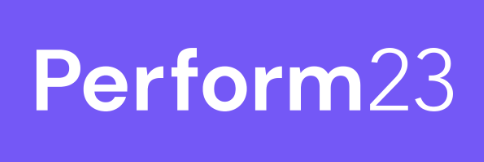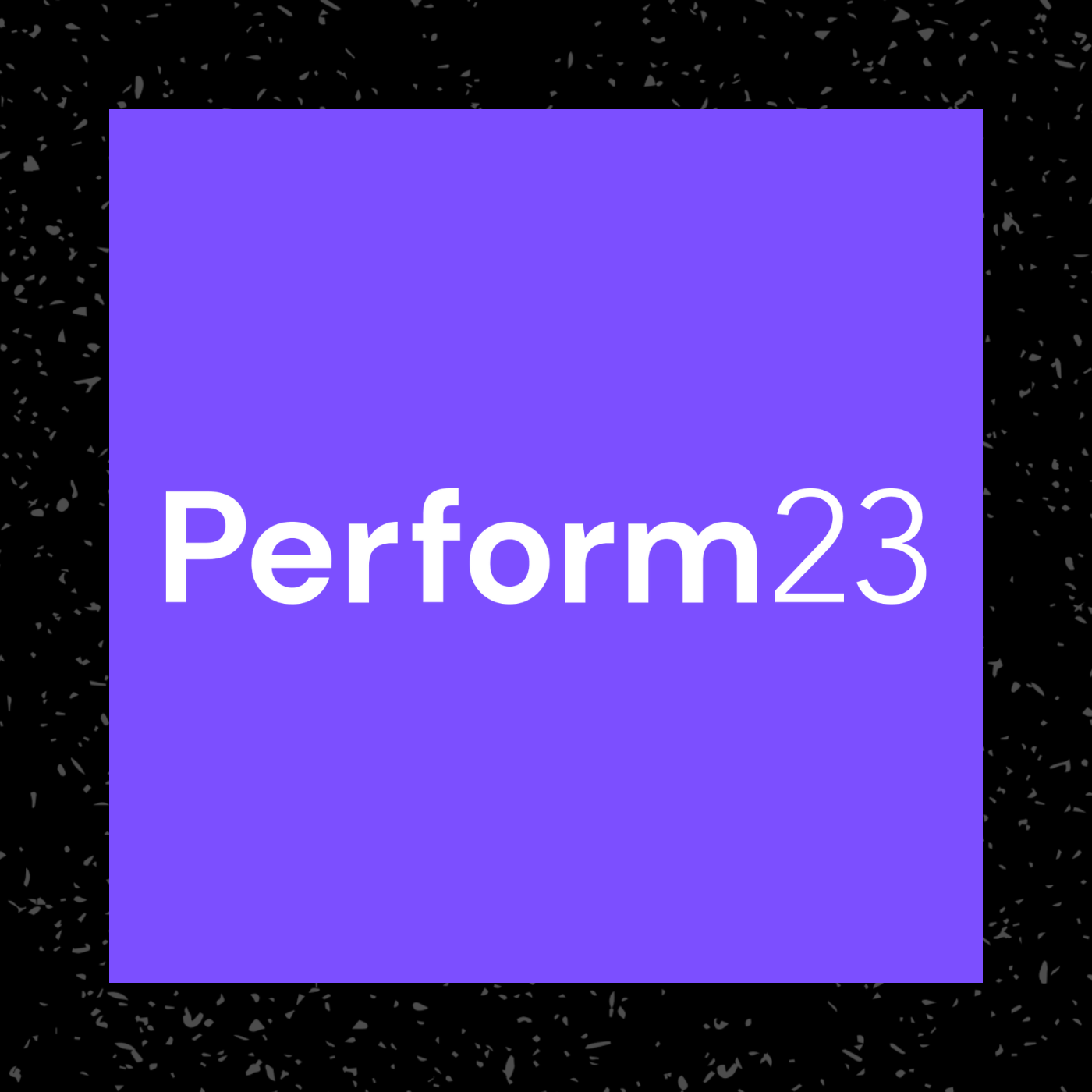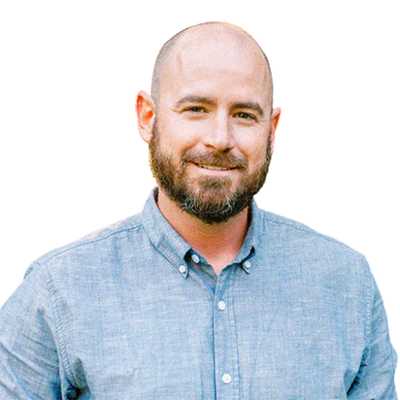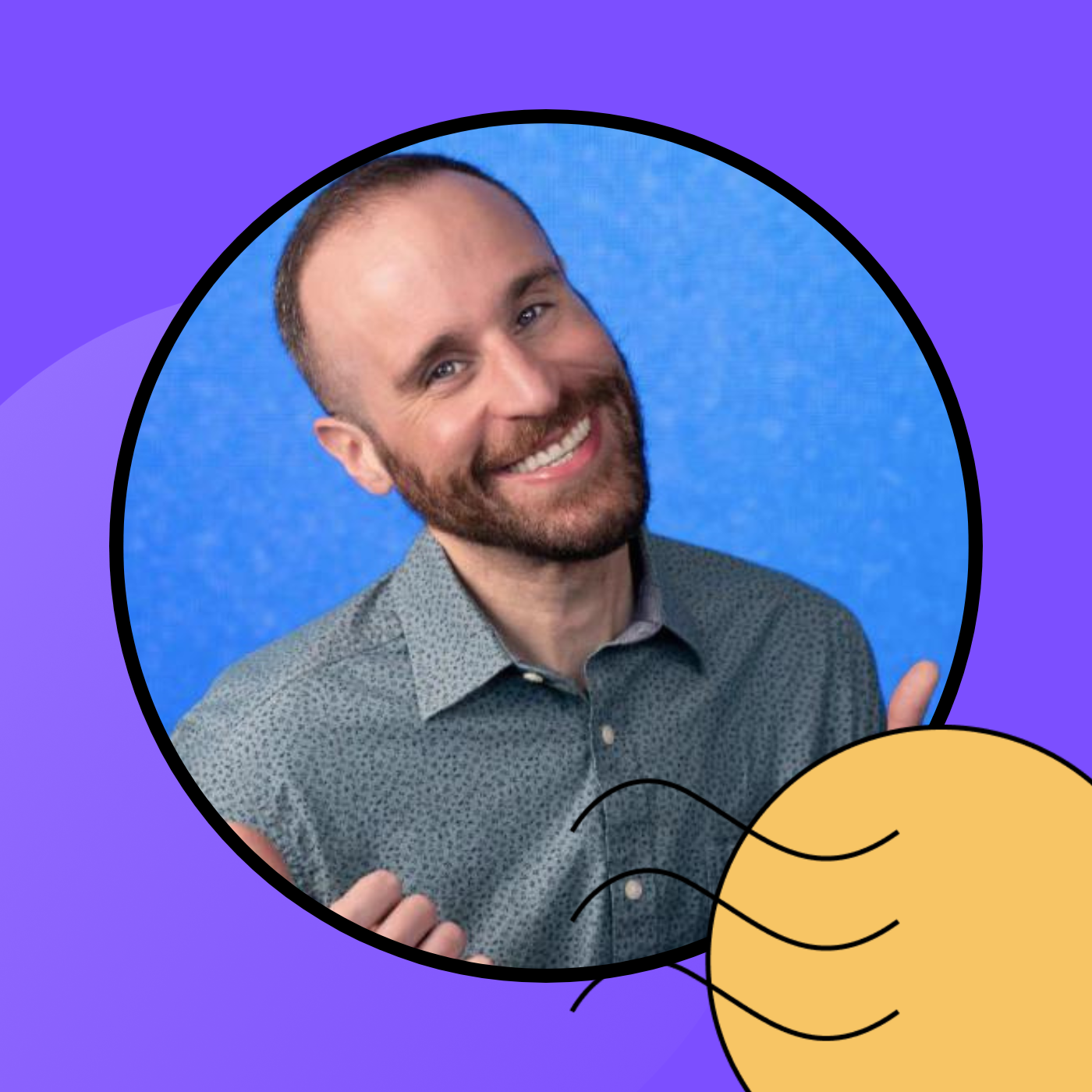Product Highlights: Building flexibility into your workforce: How to adapt to changing business needs beyond the annual plan
- 0.5
- 1
- 1.25
- 1.5
- 1.75
- 2
Genevieve: Hello everyone. How are we doing? Okay, that's good. I honestly thought that would be worse. That was not bad. Good job you guys. Did you enjoy the party last night? Okay. Also very, very good. Well, welcome. This is the second last session of the day. Very, very excited for you guys to come because it is personally one of my favorite sessions with one of my two favorite people.
Melissa Dru: Which one is your favorite?
Genevieve: No, equal. It's equal. It's fully equal. But today we're going to be talking about building flexibility into your workforce. How to adapt to changing business needs. We're going to talk about trends in workforce planning. All that fun stuff. We want it to be super engaging. Mel and Justin are going to bring in real world examples. They're going to tie it into Planful. They're going to really show you the value that you can get out of a workforce planning system. And honestly, if you have any questions, if we can't take them during the session, please find them after and ask them, email them, hunt them down. Do what you have to do to get your answers. We're here to help. But without further ado, hello, my name is Genevieve. I am a Product Marketing and Analyst Relations Manager, and I focus in workforce planning. And here we have Mel, do you want to introduce yourself?
Melissa Dru: Sure. I'm Melissa Dru, Chief People Officer, and Chief of Staff to our CEO at Planful. So world's longest title, but the benefit is I get to be in Planful every day and work with all of our teams across the business as well.
Justin: Awesome. Yeah, I work with Mel a lot, so even though I work in solution consulting, I actually, Mel, I consider my partner in crime. We work together on a lot of stuff. A lot of the things that we develop to actually bring out, show customers, show prospects, we actually share with Mel and her team as well as our finance team internally, because we do use Planful extensively internally. Because our team is filled with people like you, people who actually are practitioners, it's really kind of fun because we get to develop stuff in the product and then actually share it and give feedback from real life users.
Melissa Dru: You okay?
Justin: Yeah. Don't fall. Okay. You want the clicker?
Genevieve: You can have a clicker.
Justin: Oh, all right. Yeah.
Genevieve: All right. So today we're going to be talking about three things. The first, we're going to start just talking about your people, how important they are to your organization, why they matter. Then we're going to be talking about the workforce in general, and then we're going to finish it up, put some data to that, talk about the numbers. And as I said, tie it into real world examples. Cool.
Justin: All right. So, why people? How many of you in here plan for your people costs in Planful with workforce planning?
Speaker 4: Oh, all right.
Justin: Good turnout. Good. So we know that people costs are one of the largest costs in the organization, depending on what type of company you are, maybe you remove costs to get sold, things like that. But really the largest operational expense is usually the people in the organization. Just show of hands, how many people would agree that people costs are about 80% of that cost? Okay. All right. What do you think, Mel? Is that accurate?
Melissa Dru: I think it's a little low. I think there's some hidden costs that we don't even realize. Yeah. What do you think?
Justin: I agree. I agree. I think, and stay with me here, but I think it's probably closer to 90%. And why is that?
Melissa Dru: Well, I think that there's so many, like we said, hidden costs, right? It's not just employee salaries and their bonuses or benefits. It's things like take yourself back to 2019. Most people are in the office. Fast- forward now we have these hybrid working environments, so you're probably having to budget for remote working costs, new hire setup at home, a plan for, we introduced something 18 months ago where we wanted to help our working parents whenever they travel. So it's those additional T& E costs that are coming in. So as your workforce is evolving, as the talent landscape is evolving, there's a lot of associated cost outside of just comp and benefits that you start, you need to start planning for as well.
Justin: And one of the things that I find is when you look at the modern organization, you have a lot of software, not just Planful, but it's talking to a customer last night. They have over 60 subscription based softwares in their business. And you think about the cost of that, and it's tied to people because it's tied to licensing. And so the cost of that is certainly there's a base cost, but a lot of that is tied directly to how many people you have in the organization.
Melissa Dru: So Jason, how have you seen customers, sorry, and plan for those new costs. We know how we do it internally, but what are you seeing?
Justin: Yeah, so it's kind of a mix. And I think there's a tendency that when you think about those costs, a lot of times you think about who the cost center owner is for those, versus thinking about what the true driver is of those costs. And that's one of the things that I'd like to kind of propose to you guys today since pretty much everyone in the room is using workforce planning. Take a step back and think about your plan. Think about the compensation items, the employee types, and what things can you actually be driving based on that. So one example that we talked about internally a little bit ago was it costs, right? And we look at the licensing. So creating a actual profile for an employee based on what their job role is. So a sales rep versus someone in HR versus someone who sits in finance, different subscriptions for different softwares. We know what those softwares are, and so we can actually use a compensation item to drive those and we can drive the licensing requirement. And then what that does is it shifts the focus of IT. How many people in here, just a quick show of hands, have had the painful conversation of, hey, I need an additional license for this software. Do we have the budget for it? Right? Yeah. And that's so common, but if we let the actual driver drive it, then we never actually have to have that conversation because now IT can focus on the actual agreement. They can focus on how many licenses do we have versus focusing on the dollars because the dollars are an output. So
Speaker 5: So would you be able to do that for a new hire set up a laptop monitor and all inaudible
Melissa Dru: So that's exactly what we do with our employee attributes is we've got our great driver- based models to say, this is our capacity plan for the year, and if I have to hire 10 sales reps, I can plan all of those associated costs. So I do exactly that, laptops, remote work, cell phone, everything for that employee. And like Justin said, we've now started bringing in what is the cost of the Salesforce license, what are all of the other licenses and tools that they would need to be successful.
Justin: Yeah, and I think too, if you think about T&E, T&E is a large spend area, there's a lot of components in T&E that can be also driven by the employee, what type of employee they are, how often do they travel. I see Steve in the audience, the way we plan for travel expense and solution consulting is an assumed rate, right? This is how much spend this type of employee is going to have per month, and we can tie that directly to the headcount plan. And again, then we're kind of taking that work out of the traditional kind of budget template and instead making it driver- based that we can focus on the things we can control, which is the hiring, the timing of the hiring, what types of employees we're bringing in the organization.
Genevieve: Cool. Well, moving on from that, Mel, now that you and Justin have given us a good idea of what often gets missed in these people costs and planning, what should be on the radar? What's changing in the world of people and compensation that can impact how you think about planning?
Melissa Dru: So much is changing. I think five years ago, whatever playbook you had for people management and headcount, headcount costs are out of the window, and I think every day there's a new email coming out with new legislation and new laws. But the biggest thing that keeps me up at night and that what I'm seeing in my networks is compensation planning. And if we skip to the next slide, there's this really great survey that came out at the start of the year from PayScale saying that 60% of companies are rethinking their compensation strategy and the data sources that they have to use. So this report was surveyed with 10,000 companies. Half of them were only in tech, the rest were in all other industries, and the reason why those companies had to rethink their strategy and pull in more sources was because the world is changing, you can now hire talent nearly everywhere else in the world. And what was more surprising, on the next slide, was that a lot of companies haven't really thought about how their comp philosophy changes in this new environment. So we have customers that we've spoken to, we have people in our networks who've said, I'm still benchmarking Bay Area salaries for an engineer that I'm hiring in Wisconsin because I don't really know where to start. Then that coupled with pay transparency laws that are coming out where in certain states you have to publish compensation ranges on your job descriptions, it's a big lift for HR and finance teams to make sure that they have their comp ratios locked in, that they've got job banding. And I feel really proud of what we're able to do for our customers in Planful, to be able to bring in this compensation data into our tool to be able to show you where your employees lay compared to benchmark data so that when you're going into your planning cycles, you know what adjustments you need to make, and there is a report that's guiding those decisions for you.
Genevieve: Justin, what about you?
Justin: Yeah, I think each of these is really challenging, and from the product side, that's where we're making a lot of improvements. We brought up employee actuals. We're making enhancements to the way you can do reporting. If you attended the round table session with Linda and Mel, looking at how do we actually do band analysis, right within the product, even if you don't have pay grades or pay bands in your organization, you can still get this external data, we can bring it in, we can then attach it to the types of employees and do a lot of reporting and analysis on that. I think pay transparency is a big thing. I definitely don't know as much as you about it, but there's a lot of implications there, right? Because as we're a California company, so we have to abide by this even though we have employees all around the world. And so it creates a lot of challenge. And then making sure that not only are we abiding to the pay transparency law, but then also making sure that we're doing the appropriate compensation for those roles. Because that's a big part of that when you look at this legislation is it's forcing companies to actually take a look at and understand what are they paying people for similar roles that they have across the organization. And I think driving some standardization in terms of the way we look at compensation.
Melissa Dru: Yeah, go ahead.
Speaker 6: inaudible
Melissa Dru: Sure. So I'm just going to repeat the question for those on the line. So it was, do we think the Planful is reducing the need for an HRIS system? I have very smart people in our Planful team, and the best analogy I got is Planful is your planning tool. We're not going to be your execution tool. We're never going to do self- service like an HRIS would do, where we would manage all of your benefits and feed to providers. There's such a big space that is also, one overly saturated, two riddled with compliance, but we definitely want to be your planning tool that can feed to all of those systems and provide that single source of truth. What I love is that, before a tool like Planful, my HRIS was what I was forced to use to make sure that all of my costs were accurate. And for anyone who's worked with ADP or anything like that, it's kind of a nightmare. And so now, Planful feeds everything that we do. And because what we'll talk about this shortly, but because we have all of our systems integrated and looped in, our finance team are not calling us saying, I've got a board meeting tomorrow, I need this report. We have real time actuals coming into our system, but again, it's all starting and ending with Planful. Anything to add? Sorry, that was your line too, but it's not going to be inaudible.
Justin: I mean, you stole my lines, so it's perfect. Any other questions on some of the changes? Anything I guess you guys are seeing or thinking about that that would be something you would want to put in workforce planning? Luke?
Genevieve: Oh.
Speaker 7: I think something that I would like to see Workforce inaudible
Justin: Sure.
Justin: Yeah, you can actually create that. So there's the ability to create, think of the pay scale or not pay scale, but the pay periods. So you can basically create that variable pattern. You could kind of simulate some of those spikes, but that's a really interesting thing when we look at how do we get Predict into workforce planning. I think that's a great thing that you'll start to see is when we can use projections on workforce planning and then we can tie something like T& E and use projected value from Predict versus having a fixed amount that's going to solve that for sure.
Melissa Dru: Oh yes, one more question.
Justin: Yeah.
Speaker 5: Yeah, I think the ability, we have our bonus percentage in there inaudible. And so, you go and update half of your compensation window and we have people who manage the salary and bonuses, literally inaudible budget and what they're having to do is go in and click on the employee and then click and this compensation window inaudible bonus percentage. So to be able to get some easy to update way for those workforce attributes, to have them on that opening grid, it would save our inaudible lots of time.
Justin: I have a solution for you.
Melissa Dru: I have to say we might just change your life in the next slide.
Justin: So one would be using a global field and that global field, then you can manage that to the budget entity and you can drive that percentage. But then what we're going to talk about next is also from a data integration standpoint, being able to load those percentages. So if you have a lot of variable comp plans, stock plans, those types of things, actually being able to load those details in from the HRIS. Yeah.
Genevieve: Next slide.
Speaker 7: One thing that we've struggled with, and maybe there's a better way, so we use compensation items to drive things like payroll tax, healthcare, and I'm sure a lot of people do the same. What if we update those inaudible. Seems a little cumbersome, so I would love if there was a way to push a queue refresh or something like that. It would make that inaudible a little easier. Me and the other person that does this as well inaudible.
Justin: So I see the look on Linda's face, and so I think she can help you with that because there are a couple different ways to do that. Not putting you on the spot, Linda, but there's a couple different ways to do that. But yeah, you definitely can do it where you're not having to unmap and then remap the field. Again, it kind of depends on the specific compensation item and the attribute that we're talking about, what the best approach is. But there are definitely some solutions there. Yeah, yeah. Cool.
Genevieve: All right. My next question, go ahead.
Speaker 8: I'm really interested to inaudible, are you able to share your best practices for what you're using in inaudible?
Melissa Dru: Yes. Yeah, I think this slide would talk to it, but for us, we are mapping everything from our HRIS system into Planful. So all of our benefits costs, all of the costs associated with our employees. We bring everything in, I bring our equity levels in, our job bands are coming in as well, so that all of our reporting can easily map to our comp ratio reports. So if you envision the HRIS in front of you and all of those fields that you populate, types of employees, t- shirt sizes, titles, we bring all of that into Planful because we wanted to be able to mirror that system. We also do it for ease of use for our HR practitioners to log in and say, okay, this does look like ADP. It's not cumbersome for me to update Planful, but everything associated with an employee cost we bring into Planful.
Genevieve: Okay, awesome. With that being said, moving on to the next section, Justin, thinking about customers you work with, execute workforce planning to a T, what are they doing differently to be successful?
Justin: Yeah, I mean, one of the customers that I get to work with is Mel. So Mel does a great job, because they have the fully integrated kind of solution. And that's what I would say is a lot of customers that we have, they're not integrating to the HRIS, they're not integrating to the recruiting system. And so the customers that do it well and have a lot of automation and really drive that kind of extended value from workforce planning is just simply doing that integration through our integration capabilities. It's pretty easy, unless you're using paper to run your payroll, we can bring that data in and then it's really kind of cool because in Planful there's an ID or think of it as a primary key to that employee record. And that ties, and you can have that field in your HRIS, you can have that field in your recruiting system, and you can really bring all that data together and get everything in that singular place. And then, like Mel was talking about, you know, think about all the different compensation items and things that you manage and care about for employees now that can be translated and live in Planful and then be updated directly from your planning system and from your HRIS and from your recruiting system.
Melissa Dru: And I think maybe just if I reflect on life before Planful, what would happen is someone would say, we have 10 budgeted roles. And recruiting would say, that's great. What are the roles? When do they start? How much do they cost? What if I want to hire them earlier? Then once the hire's been made, HR would be loading all of these hires in the system, and finance will be saying, what are you doing? Why are they starting a month earlier? When is this person starting? Why are these people exiting? There was just a lot of unknowns and quite frankly, a lot of friction between HR and finance. And so the kind of user case and real life example for us is we want everyone to be speaking the same language. We want them all to receive the same data. And so now with this integration that we'll walk you through, our recruiting team can see what was budgeted in Planful. They can see the compensation, they can see the higher date, the department, they can see the range in which they can play with. And then we got to let them do their job. They hire the best people, we onboard them in our HRIS system, but as soon as someone is loaded in ADP for us and in the future UKG, it then goes back to Planful. So not to pick on Jamie here, but if I plan to hire Jamie's role seven one, and I hired him six one, as soon as he comes into the system, our finance team can see it. Equally, if Justin decided to go on vacation for the rest of his life and we termed them in ADP, that then comes across too. So now finance aren't worried just about new hires, but they can see the terminations, they can see what we want to do with those backfields as well. And it just gives us more real time insights instead of waiting for monthly actuals to come in.
Justin: And I think a big part of this too, from the finance lens is something that I really struggled with previous life, and unfortunately Jamie has been my employee for a long time, even back in the finance days. But we had to do a lot of attrition modeling and working in manufacturing, there was a lot of different models for that based on the type of role, are you a supervisor? Are you a welder? Where are you at? Which facility are you at? And if you have all of these pieces that are tied into workforce planning now we can simply bring those in as reference accounts into a template, and now we can really easily do attrition modeling on top of that. And we can also do scenario planning, if we need to plan for a shutdown or something like that, it becomes much easier to do that because we have all the pieces of the puzzle, right? All that 90%, 90 plus percent we talked about, that's now automatically being driven. And so now when we want to model on top of that, it's as simple as just applying a percentage against it to generate a positive or a negative number.
Melissa Dru: We're just waving goodbye to Grant. And I think that's also to your question earlier, this is why we bring in so much employee data into Planful because of the different scenarios that we want to be modeling in. But because of that integration as well, we want all three of our systems to map to each other and have the same data at any given time.
Justin: And the other thing that I really like about this, and the way we do it is, when you're going through the recruiting process, like as our great internal recruiting team, they're really quick at getting hires, but that recruiting system and the stage, so we use Greenhouse and the stage that hire is in, so are we interviewing, have we put an offer out, that stage can actually drive logically when that start date is right, so we can move the start date automatically. So again, just kind of taking out those manual steps that you go through. And again, I kind of would challenge you guys, maybe take a look at your financials and think about where are some of those large variances that you have. And usually it's around payroll, right? It's around the employee costs, and it's around the accruals that are related to the employee costs. And so the more accurate we can get, the more automated we can get in that planning, then we're going to reduce that variation and then we can make a lot better business decisions.
Melissa Dru: Any questions. On this one, yeah.
Justin: Yeah.
Speaker 9: You said that new hires, so what do you do really far out plus nine, plus 12 months out, are they still inaudible?
Melissa Dru: So with our integration, I would not like to kill our recruiting team at the start of the year, giving them 300 rolls to work on. So with the integration, you can actually do it on a time basis. So you can push roles from Planful to your recruiting system 30 days out, 60 days out based on your time to hire. So for us and for a few other customers, they'll push the roles for the next 90 days and then it will keep refreshing as well.
Speaker 9: Okay. So then inaudible roll you tackle that through inaudible?
Melissa Dru: Correct. Yeah. And we have a great headcount roll forward report. So you can see by department the hires coming in and going out in the next 18 months. Our recruiting team as well, our head of recruiting has access to workforce planning and the departments that she supports. So she can always look at future state, but in terms of the day- to- day execution, we kind of just push it as needed.
Justin: And one of the other things that comes into play with that is you think about the planning side. So the budget managers, if you want to get them involved, obviously, you know, got to think about how much information are we sharing, PII, like those pieces. But of course you can control that with security. But also think about in workforce planning, it's very easy to create basically a template for an employee. So within a cost center, what employee types do they have? Create that templated employee that has all the information but just doesn't have a start date, and then they can easily duplicate that, change the start date, and maybe that's the only field that you're exposing to them, right? And so then when you're going through that planning process, they can do that directly. Yeah.
Speaker 10: What you said about the individual inaudible, so it's possible to have typically one person in this compensation data inaudible. How have you been able to control every other piece of the portfolio, like everybody being individually inaudible or what we want them to see versus what we don't want them to see.
Justin: Yeah, yeah. And of course the, I'm putting my finance hat on, the risk that always comes in is if you have cost center with one or two employees, it doesn't matter if you mask it or not, you can pretty easily figure it out, right? But also that's just part of managing the business. Think about the people who actually manage your departments. They're probably involved in review cycles, they're probably involved in bonus discussions and decisions raises. So also you have to ask yourself, is that something that actually needs to be masked from the folks? Because ultimately they probably already are in some way involved in those discussions and those decisions already.
Speaker 10: I agree with you.
Melissa Dru: Not to put Linda on the spot, but Linda is our third musketeer over here. We have a customer who's a music label we love, and they have something similar and they mask the salary data, but at a region level. Because they didn't want their HR business partner in Germany to see the compensation for someone in North America, for example. So I think that was their user case. They just masked the salary data inaudible. Yeah. So there's those sort of things that we can play around with and tweak as well.
Justin: Cool.
Genevieve: I just want to be a little bit conscious of time. So I'm going to end with one last question. If we can make it a little speedy, a little speed round, that'd be ideal. And obviously you guys can feel free to find Justin and Mel and ask some questions. Because I know that you guys have a bunch of those, so feel free to reach out after. The last question, since you guys are workforce planning gurus, but I'm guessing you weren't always, of course. So for both of you, if you could go back 10 or 15 years, what advice would you give yourself, Mel?
Melissa Dru: My advice would be to not be afraid of technology and automation. I just think that there's so much power in making your life more efficient and sometimes there's a lot of fear that this will eliminate someone's role. I know you said speedy, but I have a good answer. I was at a conference last week and one of these CHROs mentioned that she has 10 digital workers on her team. And I was like, okay. And basically it was 10 bots and we know AI is the topic for everyone. And her take was so interesting, because there was 50 other CHROs who almost died when they heard this. And she said, no, you know, have to lean into this technology. This bot is doing, just copying and pasting some documents for us. But you have to realize that the more efficient we become, at least for CHROs, it gives you time to put that human aspect back into your role and really focus on your people and what is going to drive the value for your business. And that is something a bot can't do. And so for me, that was really eye- opening that sometimes we fear technology, we fear the automation, but really it can help you and your teams be more efficient.
Genevieve: I like that. Okay. Justin,
Justin: I'm just still stunned that Mel used the term HR because she hates that.
Melissa Dru: I know. Oh my God.
Justin: She's a people person. Yeah, no, for me, it would really be taking that step back and really thinking about, like we talked about at the beginning, what actually is driving the cost. I can just think about all the time that I have wasted over my life doing analysis and looking at variances and trying to explain things. When if I had just kind of got out of the details and taken the step back and really thought about what truly is the driver of this cost, and especially as it relates to your people costs, how much simpler that would've been. Every month, Jamie, I'm sure remembers, but every month we would spend hours looking at variances related to costs that were truly just driven by people and trying to draw the parallels and the lines and the conclusions. And if we just simply thought about what the drivers were, which is just simply the headcount, that would've made that process a lot easier. And then of course, having that done through technology makes it even that much easier.
Melissa Dru: Early on, you said you'd find me 10 years ago. That was a really nice answer. Now you said this.
Justin: Well, yeah. That's true too.
Genevieve: Well, with that being said, thank you guys so much for being here. I hope you enjoyed the session. We don't have any time for questions, unfortunately, but feel free to ask them later. And everything is recorded, so if you need to go back and find anything, there are other workforce planning sessions that have happened in the last few days. So go back, watch it. Slides will be available, everything's good. But I hope you guys enjoyed and thank you so much for being here. We really, really appreciate it.
Justin: Yeah, thank you.
Melissa Dru: Thank you.
Genevieve: Thank you.
DESCRIPTION
Explore the latest trends in workforce planning and how Planful can help organizations navigate the changing landscape of people costs. We'll discuss how WFP can help relieve the burden on organizations by providing better planning, scenario running, and adjustment capabilities.
Delve into new challenges facing organizations, including wage disclosures, a more transient workforce, higher attrition rates, and changing skill gaps. Learn about how WFP can help organizations overcome these challenges by providing a better understanding of workforce needs and trends.









